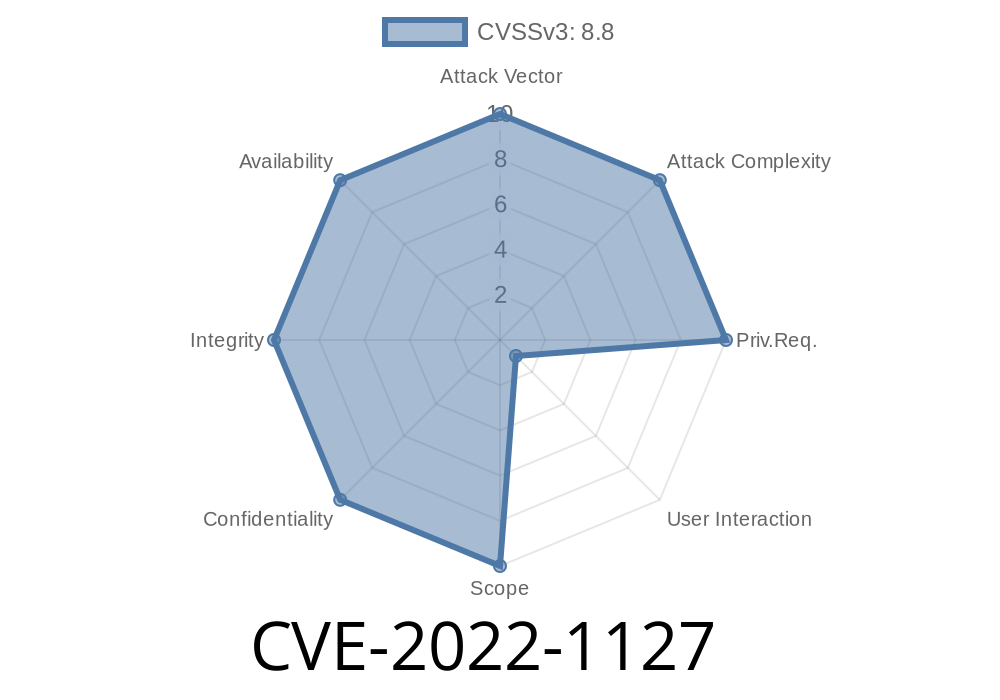The recent discovery of the CVE-2022-1127 vulnerability highlights the potential risks associated with QR code generators, especially those built directly into popular web browsers like Google Chrome. This particular vulnerability details a use-after-free scenario in the QR code generation process, which could potentially be exploited by a remote attacker under specific circumstances.
In this long-read post, we will delve into the vulnerability's technical aspects, providing code snippets, links to the original references, and an analysis of the potential exploits that arise from this issue. The goal is to help developers and users alike understand the importance of timely updates and sound security practices when using QR codes.
Vulnerability Overview
The CVE-2022-1127 vulnerability existed in Google Chrome versions prior to 100..4896.60 and was found in the QR code generator feature. The issue revolves around a use-after-free situation, which occurs when the memory allocated for a certain object is released and then used again by a subsequent process.
A remote attacker who manages to convince a user to engage in specific interactions could potentially exploit heap corruption through this vulnerability. Heap corruption is a severe issue that often results in application crashes, data corruption, or even remote code execution. It is worth noting that exploiting this bug would require user interaction, limiting the scope of potential victims.
Original References
The vulnerability was first discovered by security researchers and properly disclosed to Google Chrome's security team. The following references provide a comprehensive look into the CVE-2022-1127 vulnerability:
1. Chrome Releases - Stable Channel Update for Desktop: Link
2. NIST National Vulnerability Database (NVD) - CVE-2022-1127: Link
Code Snippet Showcasing the Issue
The following code snippet highlights the potential use-after-free issues in a simplified QR code generator:
/* Simplified QR Code Generator Function */
void CreateQRCode(QRCodeGenerator* generator) {
// Generate QR code
generator->Generate();
// Release memory allocated for generator
delete generator;
// Now generator is pointing to a freed memory location
// If another function tries to use this pointer, it may result in heap corruption
// Example of using a freed memory location
std::string qrData = generator->GetQRCodeData();
}
In the above example, the CreateQRCode() function generates a QR code using the QRCodeGenerator object. After generating the QR code, the memory allocated for the generator object is released using delete. However, if another function or operation attempts to use the same generator object later, it would lead to the use-after-free issue, potentially triggering heap corruption.
Possible Exploit Details
To successfully exploit the CVE-2022-1127 vulnerability, an attacker would need to craft a malicious website or interaction that prompts the Chrome QR code generation process. When the unsuspecting user interacts with the malicious content and attempts to generate a QR code, the use-after-free issue could be exploited.
Heap corruption could lead to multiple outcomes, ranging from relatively harmless application crashes to more severe consequences like remote code execution or data corruption. By leveraging this vulnerability, an attacker could potentially gain access to sensitive user data or even control of the affected device.
Mitigations and Recommendations
To protect against potential attacks exploiting the CVE-2022-1127 vulnerability, users should update their Google Chrome installations to the latest version (100..4896.60 or newer). This update includes the security fix that addresses this specific vulnerability, along with a range of other improvements and bug fixes.
Developers should also ensure that they follow best practices when coding to prevent use-after-free issues. Always validate object deletions and be cautious when reusing pointers to avoid accidental access to freed memory.
Conclusion
The CVE-2022-1127 vulnerability serves as a reminder that even simple features like QR code generators can contain severe security issues. By staying informed, keeping software up to date, and adhering to best practices, users and developers can greatly reduce the risks associated with these kinds of vulnerabilities.
Timeline
Published on: 07/23/2022 00:15:00 UTC
Last modified on: 08/15/2022 11:16:00 UTC
